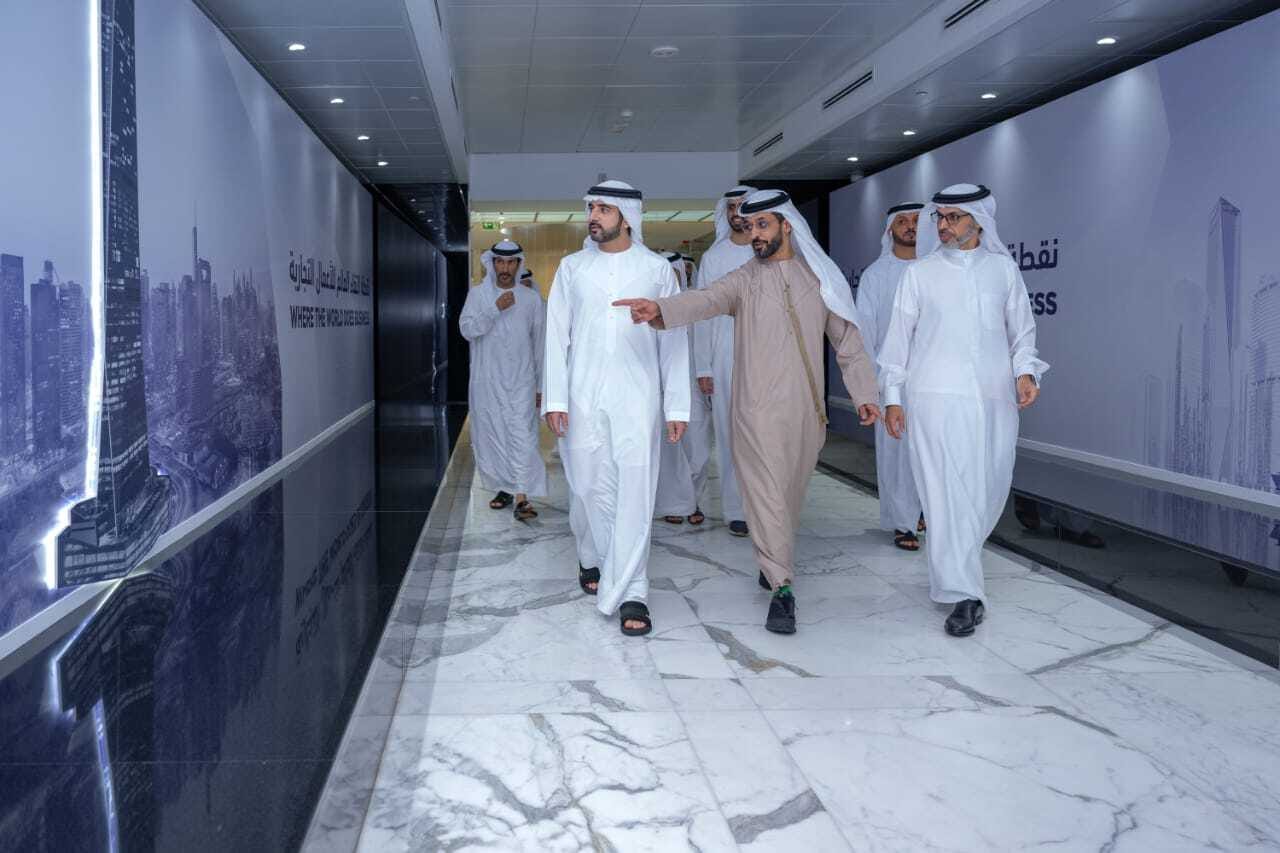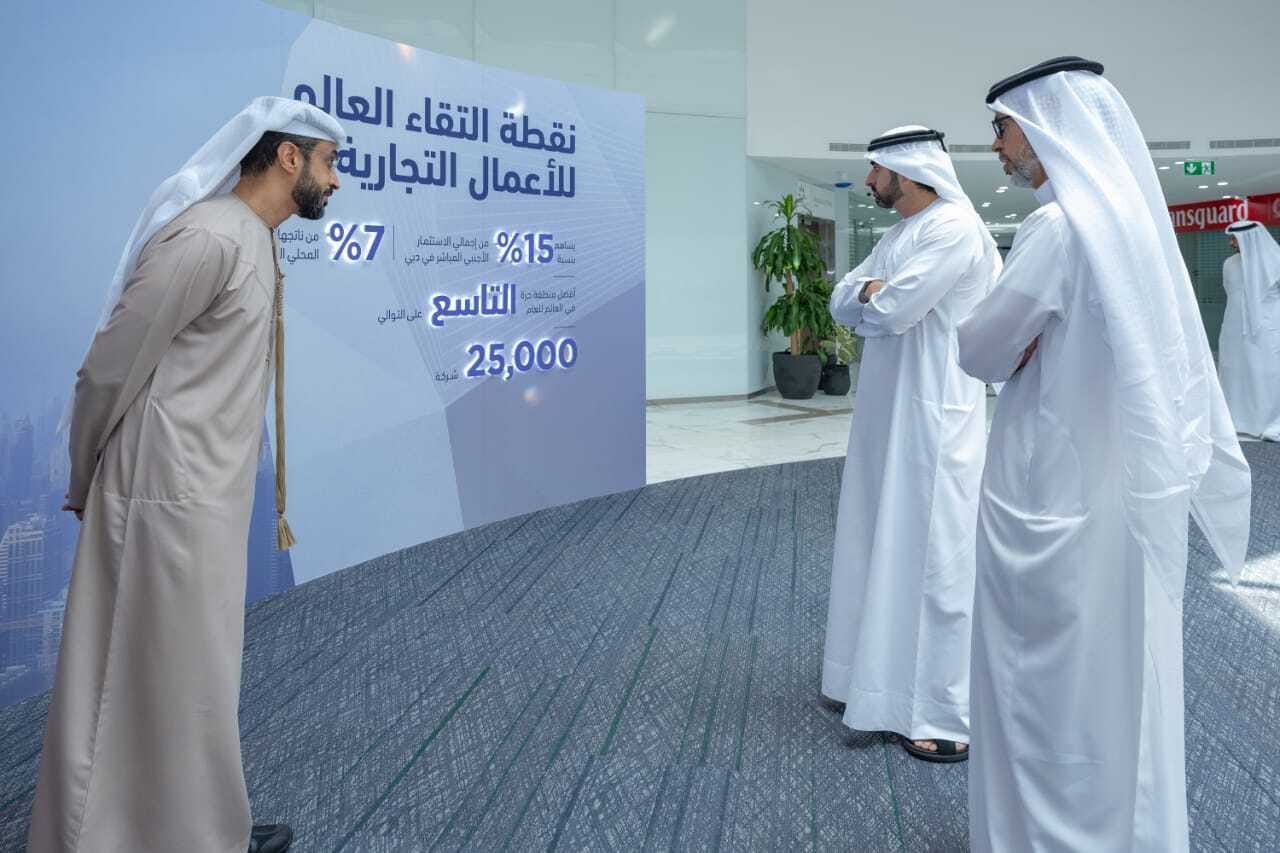Enduring Brilliance: Challenging misconceptions about the value of natural diamonds
Casual dismissal of natural diamonds reveals an ignorance of their enduring cultural significance, inherent desirability, and the vital economic lifeline they represent for millions around the globe.
It was with immense pride and indeed, a profound sense of purpose, that DMCC Authority recently welcomed His Highness Sheikh Hamdan bin Mohammed bin Rashid Al Maktoum, Crown Prince of Dubai, Deputy Prime Minister, Minister of Defence and Chairman of the Dubai Executive Council, to Almas Tower. Amongst the various stops, His Highness was given a tour of the Dubai Diamond Exchange (DDE), the largest diamond tender facility in the world, which recently surpassed the milestone of one billion carats traded over the past five years at a value of USD 153.7bn.
In acknowledging Dubai’s ascendency from almost no trade to the world’s diamond capital in just under two decades, His Highness later remarked that the exchange was one of his favourite points in the tour – a powerful acknowledgement of Dubai’s meteoric rise as the undisputed nexus of the global diamond industry. As an industry that has uniquely achieved more than almost any other commodity in terms of financial contribution, built environment and exclusivity, questions surrounding the future value of diamonds are common, however, on this particular day I found myself being questioned by a senior member of the entourage about whether diamonds had any intrinsic value at all. Such a statement, uttered in the world’s tallest diamond tower in one of the industry’s three global centres is not only ironic, but poorly timed, and admittedly the motivation for this op-ed.
In an age increasingly defined by access to information and artificial intelligence, ignorance is no longer an excuse. Informed discourse, grounded in data and understanding, is paramount. For this, we must call for reasoned debate, not flippant dismissals that undermine significant global industries. If only the individual in question had just asked AI, it would have clarified that diamonds are considered one of the most valuable and sought-after commodities in the world, with their value stemming from a combination of natural rarity, physical qualities, and enduring desirability.
While some may think of pearls when it comes to gifting a timeless present for a loved one, there is no doubt that diamonds have the more enigmatic story in terms of their creation, history and lasting social impact, particularly when benchmarked against other commodities such as gold and silver. Indeed, DMCC’s origins can be traced back to a USD 200 million sukuk which was used to develop Almas, Gold and Silver towers, and the beginning of its legacy, while over in the States, The International Gem Tower on 50 West 47th Street, New York stands as the city’s only commercial condominium designed specifically for the global diamond, gem and jewellery industry. In brief, the evidence of the diamond industry’s impact is very much upfront and present in a way that other commodities are not.
The Intrinsic Value: More Than Just a Gem
To claim that diamonds lack value is to ignore centuries of human aspiration and desire. Diamonds remain, and indeed still dominate, as potent aspirational symbols of love, success, and legacy. Their cultural status is undeniable, cemented in the glittering allure of Hollywood, the bold statements of pop culture, the cutting edge of global fashion, and, most enduringly, in the cherished marriage traditions spanning continents and cultures. The very act of gifting a diamond is an acknowledgement of something precious and deeply meaningful – a sentiment that transcends mere material worth.
Recent data only reinforces this enduring demand. The Natural Diamond Council's reports consistently highlight the resilience and continued growth in key markets, driven by renewed consumer appreciation for their unique story and rarity. As David Kellie, CEO of the Natural Diamond Council, states, "No other stone holds the emotional currency of a diamond. It remains one of the few timeless assets that are bought with the heart but backed by real value."
Looking to the future, and beyond their aesthetic and symbolic appeal, diamonds are increasingly being recognised as critical minerals that will enable next-generation technologies. Their unparalleled hardness, thermal conductivity, and unique electrical properties make them indispensable in applications ranging from advanced computing and quantum technology to medical devices and sustainable energy solutions – and while lab-grown diamonds will more likely take a practical role in this field due to cost efficiency, the distinct, functional value of natural diamonds remains unchanged.
The Human Impact: Millions of Livelihoods at Stake
Beyond their symbolic and technological significance, the global diamond industry is a colossal economic engine, directly impacting millions of livelihoods around the world. Indeed, the sheer scale of its human contribution is often overlooked in flippant dismissals of its value. Consider India, where approximately 90 per cent of the world’s diamonds are cut and polished. This massive undertaking employs hundreds of thousands of skilled individuals in the bustling cities of Surat and Mumbai, providing economic stability and opportunity for entire communities.
Further upstream, nations such as Botswana, Namibia, Angola, the Democratic Republic of Congo (DRC), and Zimbabwe rely heavily on diamond revenues. These critical resources fund essential infrastructure, establish and maintain schools, and provide vital healthcare services, literally transforming nascent economies and uplifting populations. Specifically in Botswana, diamonds represent 80 per cent of its exports and account for a third of its fiscal revenue, significantly contributing to the nation's GDP and development. To claim diamonds are worthless is to erase the economic contribution of entire nations and to undermine the livelihoods of millions across India and Africa.
Beyond the direct economic impact of mining and cutting, the downstream segment of the diamond industry – encompassing jewellery manufacturing, design, and retail – extends its influence to countless more individuals globally. From master artisans to dedicated sales professionals and logistics specialists, the industry supports a vast and intricate network of skilled labour and entrepreneurship. It is in this final stage where the diamond's journey culminates in consumer purchase, sustaining a global ecosystem that thrives on aspiration, artistry, and robust supply chain management - and at the heart of it, Dubai.
Dubai’s Rise as the Global Diamond Hub
Aside from the Dubai Diamond Exchange, the UAE, and Dubai are deeply embedded in the very fabric of the diamond industry, not only in terms of trade, but monitoring, development, certification, and discussion. Chairing the Kimberley Process for a second time, the UAE leads positive change in the UN-mandated organisation that continues to be the only successful effort to stem the flow of conflict diamonds. As a business hub, DMCC is home to the 68-storey Almas Tower, the world’s tallest diamond tower, a record it has held for the past 16 years. It also continues to boast unmatched, dedicated infrastructure, while remaining consistently overbooked by an extensive range of industry stakeholders. DMCC is also the base for a wide variety of major diamond businesses including IGI, and the Gemological Institute of America (GIA), the latter of which occupies two floors in Uptown Tower. As a destination for congregation and debate, DMCC continues to host a broad range of events including the LGD Symposium and KP Plenary later this year, while the Dubai Diamond Conference, which returns for a seventh time in 2026, consistently draws industry leaders such as De Beers’ CEO Al Cook and Zimbabwe's Winston Chitando, Minister of Mines and Mining Development. DMCC is also a leading destination for other industry authorities, including but not limited to the World Diamond Council and The World Federation of Diamond Bourses.
In continuation of its global success as the global centre for rough, having overtaken Antwerp several years ago, Dubai is also actively vying for the top spot in polished diamond trading, with recent milestones including Rapaport’s 50,000 carat auction, Dhamani’s unveiling its exclusive collection of Dubai Cut Diamonds, and the display of multi-million-dollar stones by global powerhouses like Sotheby’s.
Facts vs. Opinions in the Age of AI
When an opinion is aired publicly, particularly by an individual of influence, and it flagrantly ignores verifiable facts, the livelihoods of millions of people, and the economic contribution of entire nations, then it ceases to be a mere personal viewpoint, but a statement that must be challenged. Following the recent World Federation of Diamond Bourses’ President’s Meeting, I am reminded of a quote from Martin Rapaport: “Diamonds are a store of value. Not so much as an investment, although I do believe diamonds will be an incredible investment once we establish sufficient markets for them." As someone who I would consider as a consumer’s best friend, I would highlight that Martin’s RapNet is an extremely useful tool that clearly illustrates diamond value, before luxury consumer jewellery brands add their markups, albeit yet another example of how important storytelling is in terms of B2C sales.
Ultimately, the value of diamonds is real, tangible, and profoundly impactful, and thanks to Dubai’s visionary leadership, an integral part of the city’s enduring legacy.






